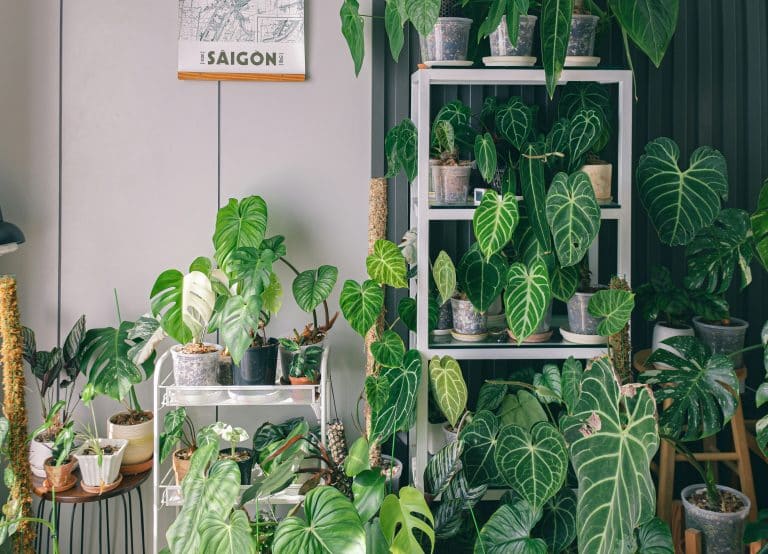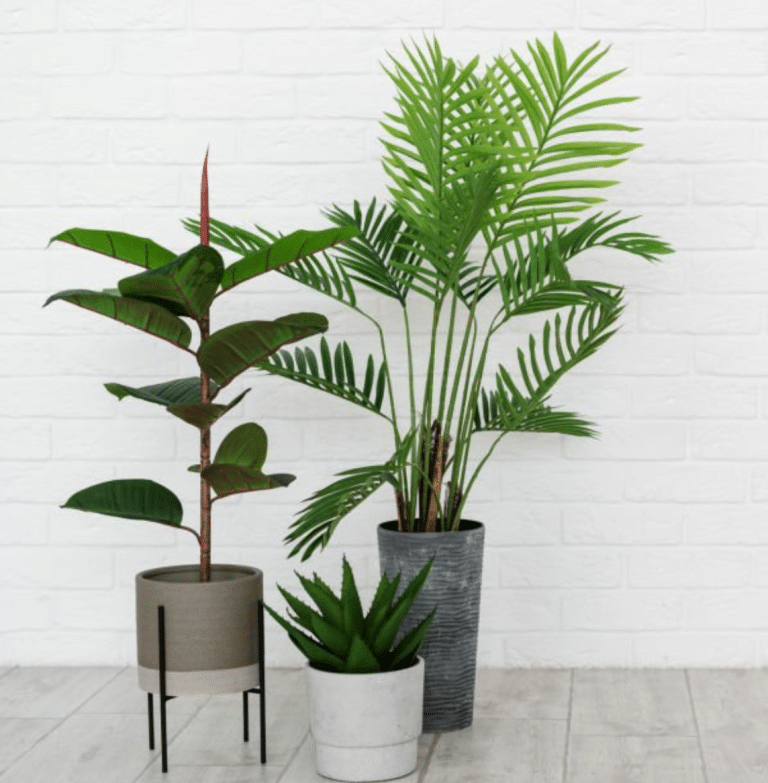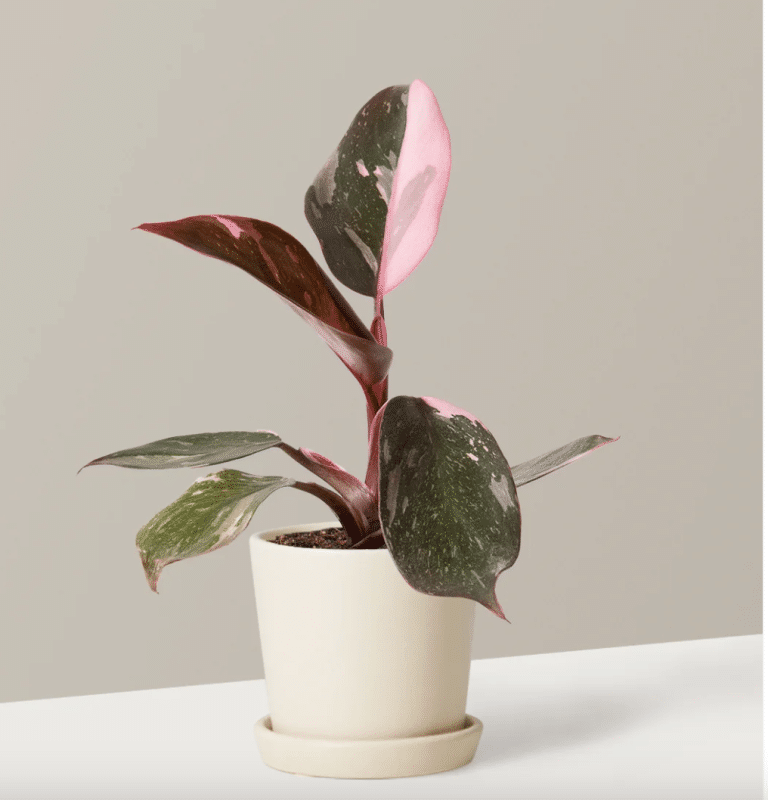Ultimate Guide to train the Trailing Plants to Climb or Hang Down

When you purchase through links on our site, we may earn an affiliate commission, which helps sustain our blog!
Trailing houseplants are the multitaskers of the indoor plant world—effortlessly stylish and surprisingly adaptable. The real magic? You get to choose how they grow! Whether you want them cascading elegantly from a shelf or climbing up a moss pole like a mini indoor jungle, training trailing plants is easier than you’d think.
In this guide, we’ll show you how to train trailing plants to climb or hang down, with methods that work for both lush growers like pothos and delicate vines like string of hearts. We’ll walk through trellises, pruning, propagating,tying techniques, and creative ways to turn your home into a living, leafy sculpture.
Best Plants for Climbing vs. Trailing Growth
Great Climbers:
- Heartleaf Philodendron
- Pothos (Epipremnum aureum)
- Monstera adansonii
- Hoya carnosa
- Scindapsus pictus
Great Trailers:
- String of Pearls
- String of Hearts
- Tradescantia
- English Ivy
- Spider Plant
Tools and Supplies You’ll Need
- Moss/coir poles or trellises
- Soft ties, Velcro strips, plant clips
- Pruning shears
- Hanging baskets or wall-mounted planters
- Spray bottle (for misting climbing supports)
When to Start Training Your Plant

Best Done During Active Growth Season (Spring/Summer)
We’ve found that the best time to start training any trailing plant is when it’s actively growing—which is usually spring through late summer. The vines are more flexible, new leaves are popping up constantly, and the plant has the energy to adapt to a new structure. We tried training a pothos in winter once and it just sat there… didn’t respond, didn’t climb, nothing. It’s kind of like asking someone to run a marathon while they’re hibernating — timing matters!
Read also: our guide to best soil and fertilizers for trailing houseplants
Start Once Vines Reach 6–8 Inches for Best Flexibility
There’s a sweet spot when vines are just long enough to train but not yet stiff or tangled. Once they hit that 6- to 8-inch mark, we gently start guiding them up a moss pole or around a hoop trellis. Too short and they won’t wrap or secure well. Too long and you’ll spend more time untangling than training.
Avoid Training Newly Propagated or Recently Repotted Plants
New roots are fragile. Wait at least 3–4 weeks after propagation or repotting before we even think about training. We want the plant to be rooted, stable, and showing signs of active growth before adding any stress.
Signs a Plant Is Ready: Aerial Roots, Long Runners, Uneven Growth
The best clue that a plant wants to climb? It starts doing it on its own. Aerial roots poking out, vines reaching toward the light, long runners with sparse leaves—it’s practically asking for direction. We’ve seen this with philodendrons and monstera adansonii especially. If the growth feels a little wild or lopsided, that’s our signal it’s time to help it grow with purpose. We’ll attach it gently with clips or soft ties and let it find its groove from there.
How to Train a Plant to Climb
/

Use Moss Poles, Coir Poles, Bamboo Trellises, or Wall Grids
We’ve tested almost every kind of support out there—some look great but don’t work, others work but look clunky. Moss poles and coir poles are our go-tos for plants with aerial roots: like philodendrons and monsteras.
They hold moisture and give roots something to cling to. For lighter, twining vines like hoyas, we like bamboo hoops or wall grids—they don’t need moisture, just something to twist around. The key is matching the support to the plant’s natural climbing style.
Gently Tie Vines Using Plant Tape, Soft Twine, or Clips
We used to try and wrap vines tightly around poles… but they snap or droop. Training is more like guiding than forcing. We now use soft twine, plant Velcro, or those little bendy clips and secure the vine loosely at first. You want to support the plant without cutting into the stem. Aerial roots should be able to make contact and attach naturally over time.
Secure Vines at Each Node or Every Few Inches
Securing just the tip of the vine won’t cut it. It’ll flop or twist, and the roots might never attach. Secure the vine at every node or at least every 3–4 inches. It gives the plant structure and helps those climbing roots know where to go. Plus, it keeps the whole thing looking neat and intentional instead of wild and droopy.
Rotate the Plant Regularly for Even Light and Growth
If your climber’s facing a window, it’ll lean hard in that direction unless you rotate it every week or so. We keep a sticky note on the shelf to remind us—otherwise the back side stays bare, and the whole thing gets lopsided. Turning the pot just a quarter turn every few days can make a huge difference in even leaf growth and support attachment.
Mist Climbing Supports if Using Moss/Coir to Encourage Aerial Roots
For plants with aerial roots, misting the pole itself works wonders. We do this every few days in warmer months—it helps roots soften and dig in faster. Just don’t overdo it in low humidity spaces or you risk mold. A quick spritz is usually enough. We’ve even used a damp paper towel to gently press roots against the pole until they catch.
Don’t over Prune
We’ve definitely gone a little scissor-happy before. You think you’re encouraging fuller growth, but if you prune too often—or cut back too far—you can actually stall your plant’s momentum. We learned to hold back and only prune when vines start looking leggy or unbalanced. Now we trim just above a node and never take more than a third of the plant at a time. Giving it space to recover between trims has made a huge difference in getting that full, lush look without stressing the plant.
Read also: our guide to growing longer vines
How to Encourage a Plant to Trail Down
Let Vines Cascade Freely from Hanging Baskets, Shelves, or Macramé Holders
Sometimes, less control is the best kind of training. We’ve found that the easiest way to encourage trailing growth is just letting the vines do what they naturally want to—hang. Whether it’s from a bookshelf, a windowsill, or a hanging basket near a window, giving those vines open air to fall into makes a huge difference.
We especially love macramé hanging baskets because they add texture and let vines fall from all sides evenly. It’s wild how fast a pothos or tradescantia will respond when it has room to stretch out.
Prune Tips to Stimulate Bushier Growth and Fuller Trailing
Cutting back a healthy vine feels counterintuitive—like why would we cut the pretty part?! But once we started snipping the ends every few weeks, we saw way more side shoots and fuller, thicker growth.
It’s like the plant realizes it needs backup branches. Now we always prune right above a node (where a leaf meets the stem) and give it a few weeks—boom, fuller trailing vines. (And use the cut leaf to propagate!)
Turn the Pot Occasionally to Avoid One-Sided Growth
One thing we kept noticing: plants trailing hard in just one direction, leaning toward the nearest light. It looked fine at first… until we turned the pot and saw a bare, scraggly backside. Now we give our trailing plants a quarter turn every time we water—nothing fancy, just a habit. It keeps the shape even, encourages all-around trailing, and helps the plant get light from every side.
Use Support Hooks to Guide Trailing Vines Around Shelving
Sometimes we want more than just a straight fall. We’ve started using clear command hooks or tiny wall tacks to guide vines across bookshelves or curtain rods. It adds that “intentional jungle” feel without much effort. We’ve even wrapped pothos vines around the edge of a mirror. As long as the plant gets enough light and isn’t pulled too tight, it’ll happily keep growing in that direction.
Avoid Overhead Light Glare—Bright, Indirect Light Works Best
We didn’t think about this at first, but if you hang a plant right under a bare bulb or harsh overhead light, it won’t love it. Leaves start to crisp or curl, and growth slows way down. We’ve had the best luck placing trailing plants near east- or north-facing windows where they get soft, indirect light all day. It encourages steady trailing without stressing the leaves.
Conclusion:
Training trailing plants—whether up or down—isn’t about controlling them; it’s about giving them a gentle nudge in the right direction. With the right support and a bit of consistency, you’ll watch your indoor vines become sculptural, full, and downright stunning. Whether your space needs vertical height or flowing greenery, training your plants adds structure and a whole lot of charm.
Ready to get those vines moving? Grab some ties and let the leafy choreography begin!





